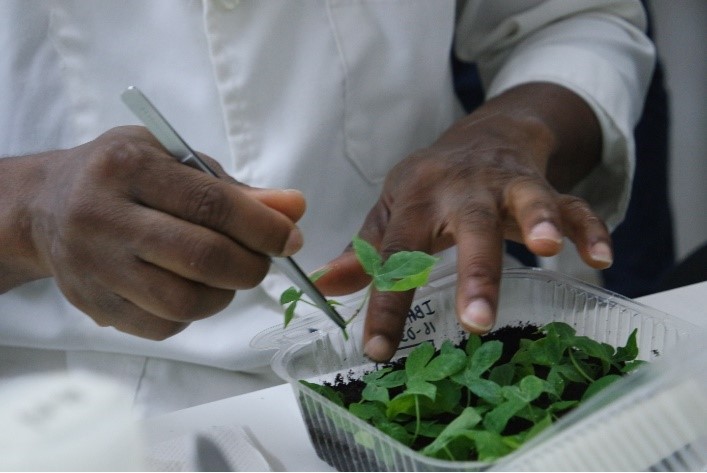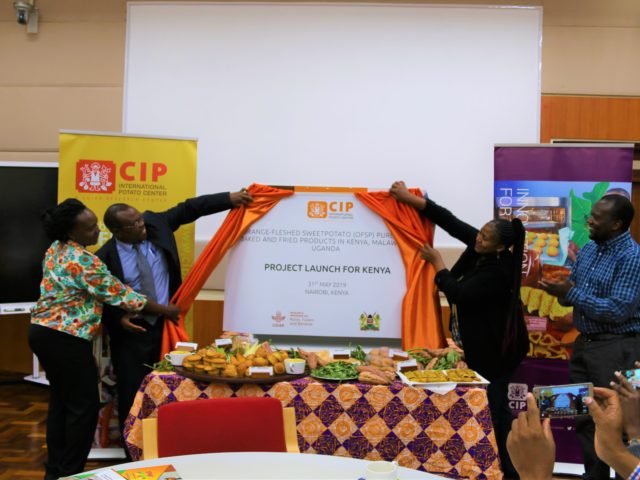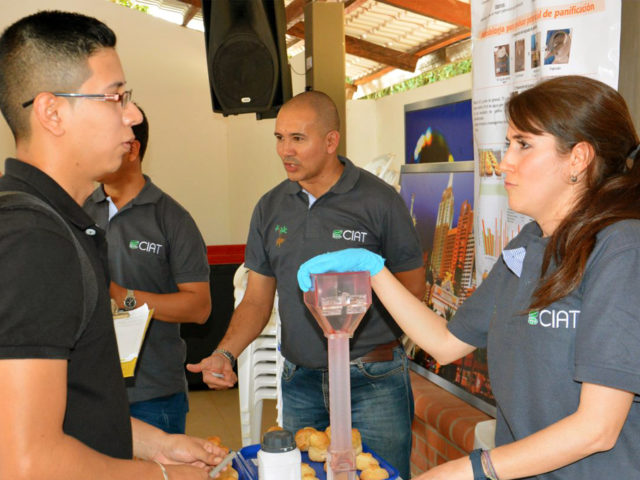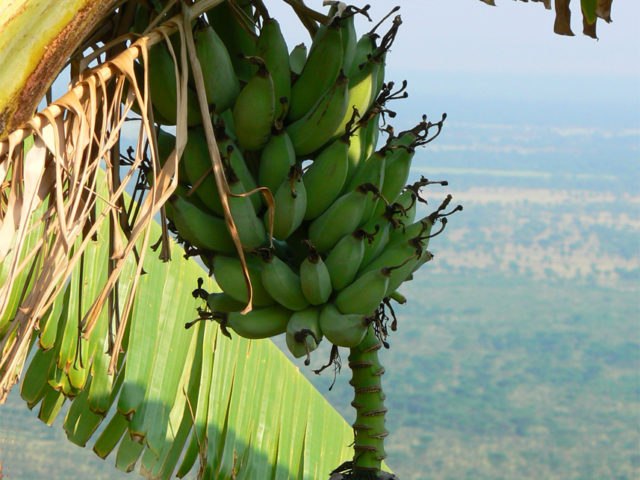Roots, tubers and bananas share one characteristic that unites them in the CGIAR Research Program on Roots, Tuber and Bananas (RTB): farmers multiply them vegetatively, rather than as true seeds produced by sexual reproduction. Of course, they are also extremely important for the food security, nutrition and livelihoods of the most resource-poor farmers on Earth. And that makes a recent paper in the journal Food Security, which asks why interventions in RTB seed systems do not reach their full potential, important to policy-makers and farmers alike.
Together with RTB colleagues, Conny Almekinders, of Wageningen University in the Netherlands, examined 13 previous efforts to improve seed systems for potato, sweetpotato, cassava, yam and banana. “We began to look at these cases in 2014,” Almekinders said, “as it became clear that an increasing number of RTB projects were introducing new varieties and improved multiplication practices, especially in Africa.”
“The case study documents did not show us evidence of many efforts to understand target seed systems,” Almekinders added.
Too often, the projects did not consider the fact that they were intervening in an existing local seed system or farmers who were known to be local seed experts. Many projects simply assumed that some farmers would specialize and become seed-supply entrepreneurs to fill the gap where the public sector could not reach, and the private sector was absent or uninterested. Such projects were often founded on the idea of a central source of high-quality foundation stock, usually produced with advanced technology, such as aeroponic micro-potatoes, yam mini-setts, and tissue culture bananas. These would then be passed to “decentralized multipliers” who would create further generations for distribution.
This approach succeeded sometimes, as with sweetpotatoes in Rwanda, where there was a good link to market for the products. In other cases, Almekinders says, “without project support and subsidies, the technical and economic viability of these decentralized multipliers is not clear.”
One problem, especially in sub-Saharan Africa, is that many farmer cultures consider it inappropriate to pay or to ask for payment for planting material. This reticence may be partially overcome in the case of new varieties, but otherwise is likely to limit the opportunities for business-based informal RTB seed systems.
Some projects, such as the introduction of orange-fleshed sweetpotato in Mozambique, focused on health and nutrition and barely considered the seed system. Despite this, adoption and spread, via the informal seed system, have been impressive. “Orange-fleshed sweetpotatoes are now being grown by thousands of women on small plots of land,” Almekinders said. Varieties will spread and be adopted if farmers see a benefit.
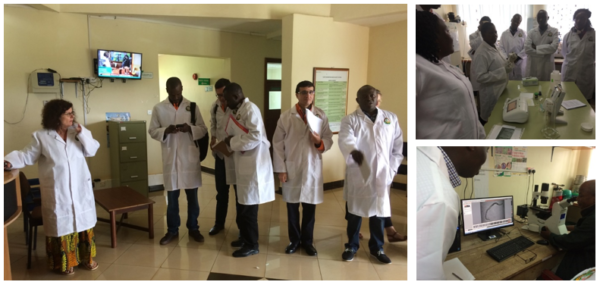
RTB community of practice on one of their learning journeys, a joint visit of KEPHIS laboratories in Nairobi, Kenya
Pros and cons
Vegetative reproduction means that the variety keeps its genetic characteristics, unlike sexually produced seeds. This is a boon when getting new material into the hands of farmers, because it means they can share the improved material in their communities. The flip side, however, is that viruses and other diseases can accumulate in the planting material, reducing its performance.
Farmer-to-farmer diffusion remains the primary route for adoption, as farmers with good experiences multiply the improved material and share it with others. For banana, cassava and potato, the cases show that farmers often share new material with five or more others.
Unfortunately, diseases often spread along with the crops, as they have recently for viruses of cassava in eastern Africa and banana bunchy top virus in the Congo basin. Such degeneration is perhaps the most common reason for farmers to seek RTB planting material off their farm. Although this suggests an additional motivation for decentralized multipliers, there is little evidence that farmers will pay for clean planting material of varieties they already have.
What farmers want
The lack of demand is not simply because farmers do not understand the benefits; in many cases they lack other essential resources to make use of better planting material, such as capital or knowledge. Researchers may insert ‘demand’ in their project proposals, but when the project fails to distribute the expected amount of material, they seldom analyze the reasons why predicted demand did not materialize.
“Improved assessment of farmers’ demand will contribute to improving seed system interventions,” said Almekinders.
Government policy represents another barrier to improved seed systems. Certification schemes that guarantee the quality of planting material may raise costs beyond the reach of most farmers. But the absence of such schemes leaves farmers open to the sale of poor-quality seed.
Potential delivered
A 1990 study of potato identified many of the same problems as this more complete and wide-ranging survey of RTB seed interventions. “Not much seems to have changed since,” said Almekinders. But change is now in the air. The International Potato Center is already applying a diagnosis of existing seed systems to all projects going forward. And the project has started to create change beyond RTB.
“Just last week I learned that our framework is being used in a PhD project in Eritrea,” Almekinders said. “The key to progress is to pay attention to what works where, and for whom, and how to scale up good practices. We have not been good at understanding RTB systems or listening to what farmers really need. If we want to improve RTB crops, we have to improve RTB seed systems too.”
